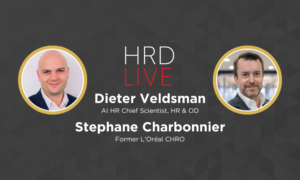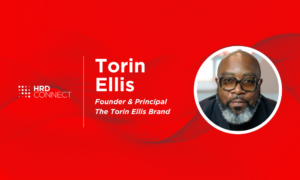The changing shape of the HR leader
- 7 Min Read
The demands and skills of the HR professional have been changing for some time. People leaders now need to be a specialist and generalist simultaneously if they are to be successful in the modern workplace. This is the T-shaped HR leader.
- Author: Natal Dank
- Date published: Dec 20, 2021
- Categories

As the world of work transforms, so do the demands and skill requirements of the HR professional. To be successful and make an impact, they need everything from commercial awareness and influencing skills to data analytics and design thinking. Translating these demands into a career development plan can feel like HR professionals now need to be a specialist and a generalist simultaneously.
Is this new type of HR professional even possible? Can they acquire the full stack of skills now demanded in the modern workplace? The answer to these questions is yes, but to realise this vision requires a whole new approach to how we develop HR careers and at the core of this is the need to embrace our T-shape.
How a new working paradigm demands a new skillset
In a disrupted world, all eyes are on HR to help organisations rapidly respond to new and unexpected challenges. Not only does HR need to focus on the wellbeing and safety of their people, but they also play a crucial role in helping their business navigate complexity and adapt at speed to changing customer and market needs. This range of activities suggests the modern HR professional must be able to demonstrate empathy and personal connection on the one hand, while also possessing a strategic mindset and commercial acumen on the other.
Just like the wider business, the problems faced by HR within the workplace are increasingly complex. Most HR and people strategies contain big, complex topics, such as designing a personalised employee experience for a diverse workforce or upskilling leaders in how to lead teams in a hybrid and digital working environment.
The traditional HR skillset and collection of best practice solutions are proving to be increasingly out of touch as the world of work transforms. Often comprised of functional topic owners and siloed teams, traditional HR is too slow in responding to business needs.
In the modern workplace, the HR professional also needs to partner and collaborate with the business in a new way. Rather than designing HR policies and processes in isolation, there is now a demand to co-create more personalised solutions through techniques such as design thinking, prototyping and experimentation.
All this leads to the HR profession needing to develop T-shaped people and T-shaped teams. These means having the breadth of experience and ability to work across a range of different business scenarios and projects, as well as deep dive into a few specific topics if needed.
For a HRD (Head of HR) this implies a new skills-based method in how to build a People function. By mapping and proactively developing the T-shape of each team member, a HRD can start to build multi-skilled teams made up of T-shaped professionals complimenting each other. Also, by actively improving the stretch of capabilities within individual team members, we start to improve the capabilities of the whole HR function and enable HR to successfully deliver a full end-to-end employee experience across the business.
What is a T-shaped HR leader?
The T-shaped HR professional is someone who has numerous general skills, represented by the horizontal part of the T, combined with a few deep specialisms represented by the vertical part. This is a new kind of professional who breaks out of the traditional HR siloes and builds great general business and commercial capabilities as the horizontal, supplemented with deep specialisms in specific people topics as their vertical.
A T-shaped HR professional is essentially the full stack, crafted to reflect their own preferences, interests and personal experiences. They are also intrinsically more employable and naturally meet the modern workplace demands of being customer-centric, collaborative and able to network as part of multi-skilled teams.
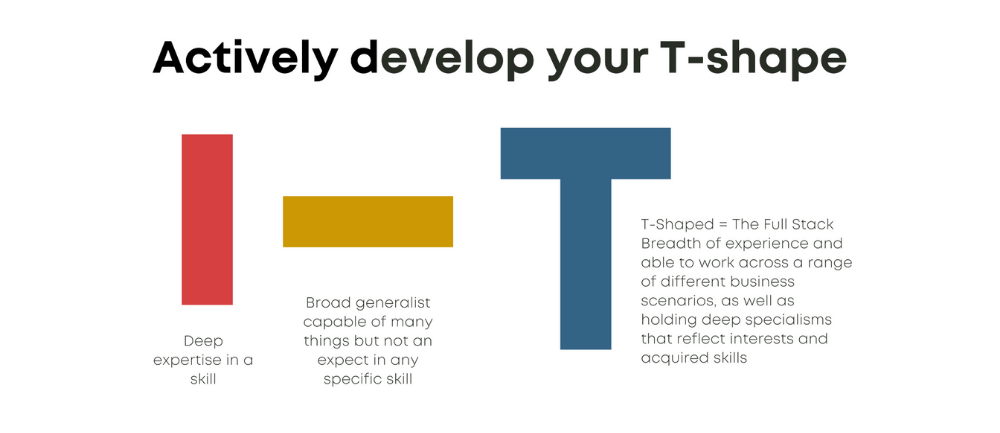
Advantages of being a T-shaped HR professional
The first great benefit gained by actively developing your T-shape is the opportunity to truly become both the HR specialist and generalist at the same time. By strengthening your T-shape you’ll also become a more capable and flexible HR professional able to move between different roles, teams and business scenarios. Other advantages include the ability to:
- Apply an agile and collaborative mindset
- Share knowledge and contribute to solving complex business problems
- Build end-to-end employee experiences and deliver integrated HR practices
- Work in an evidenced-based way and use data to influence decision-making
- Leverage technology and digital solutions
- Better understand the business and empathise with your customer
- Add value and measure impact
How can you develop your T-shape?
It’s crucial to now view your career as more of an agile adventure and embrace the idea that you can continuously build skills by working through iterations and mini life-projects. Forget the career ladder, an agile career is about cycles of moving up, down, sideways and being in the best position to grasp opportunities as they arise.
The following techniques are useful for an HR professional at every stage if their development. However, the approach is particularly effective for HR Directors wanting to develop skillsets across their function. Not only do the following steps help to drive a more dynamic approach to career development at the individual level, but it also allows a HR leader to map skills across teams and begin to identify gaps, development needs and of course, where different T-shapes can complement each other.

Step 1 – Map your current T-shape
Map your existing T-shape using the table below.
- Consider your general capabilities and add these to the horizontal cells. Common general capabilities include skills such as change management, being digital savvy, understanding your customer and using data.
- Now, list your specialisms. These are capabilities that reflect your deep expertise, training, studies and preferences. Common specialisms include recruitment or talent management expertise, facilitation, coaching and people strategy.
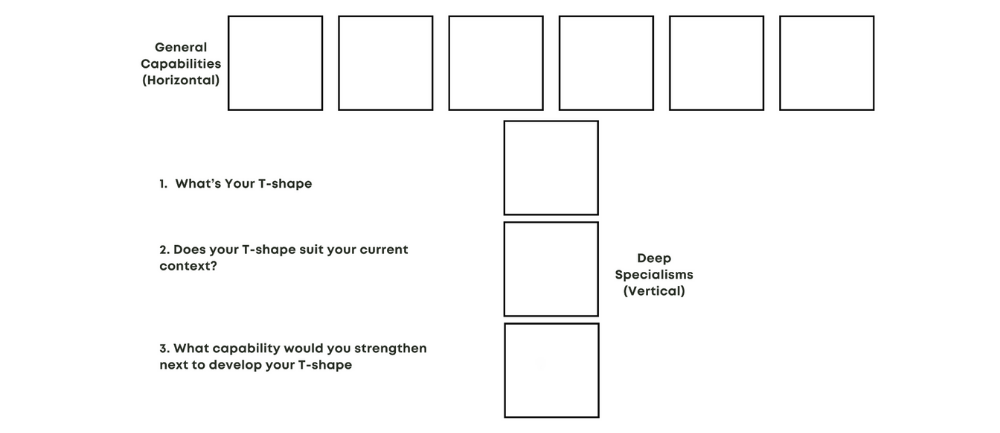
Step 2 – Get feedback
Gather feedback on your existing T-shape. Ask peers, mentors, coaches, managers, friends, even family, to assess the skills you’ve mapped out in your T-shape. Explore development areas and any blind spots.
Step 3 – Assess your T-shape suitability
Consider whether your T-shape meets the needs of your existing business environment and suits your current context. For example, is there a need in your business to operate at speed in a fully digital environment? Perhaps you’re being asked to drive innovation and redesign existing processes and systems. If so, what general capabilities would these types of business environments demand and are they currently reflected in your T-shape?
To help, here’s a collection of modern HR capabilities increasingly sought after by agile organisations.
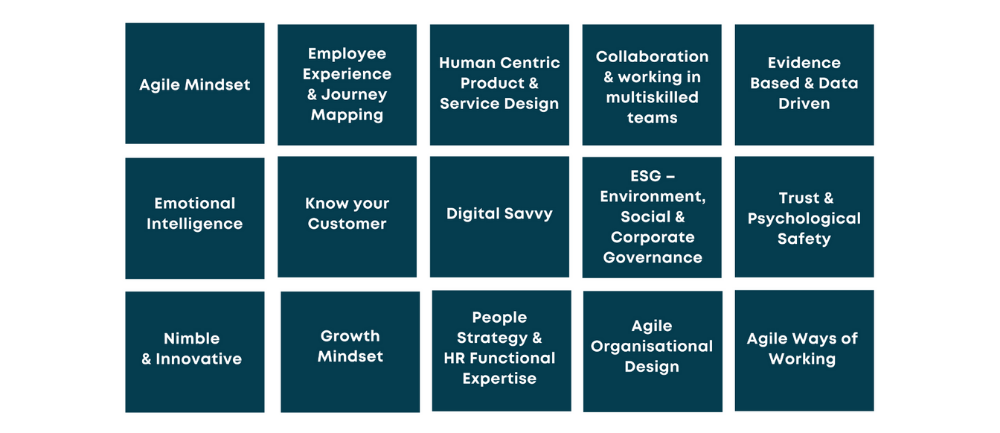
Step 4 – Build a career development backlog
Decide which capabilities to develop next to strengthen your T-shape and build a career development backlog. A backlog is a more dynamic way to steer your career and helps you plan your development in smaller increments, which are easier to commit to and get done.
A backlog also allows you to re-prioritise goals and areas of focus as time goes on. The use of Kanban or Scrum boards to manage the backlog further enhances the approach by helping you visualise this career development.
To help strengthen your T-shape, write up learning and development actions in the form of backlog items. These can be anything from finding a mentor to completing some LinkedIn Learning. You can even set goals with the aim of developing specific skills or experiences within a time-boxed period.
Activate your T-shape now
HR professionals who develop their T-shape will be an asset to any business team. They will articulate the value they can offer to a new team or project and describe how to navigate different business scenarios and help solve complex problems. In a competitive business environment, this is the kind of full-stack HR professional every organisation wants in their team.
So, what’s your next step to accelerate your T-shape development?
To learn more about PwC’s tech-enabled solutions that can help companies upskill their people, click here




